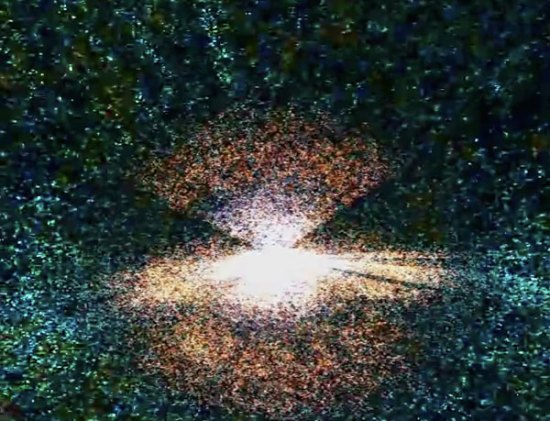Largest 3D Map of the Universe
The Sloan Digital Sky Survey has the auspicious aim of creating a map of the universe that is accurate, and covering much greater distances than ever before. The result was unveiled this past Sunday, and the team seems to have lived up to their claim.
The map’s makers used 14,000 quasars, some of the brightest bodies in the universe, to illuminate gas clouds in regions of space some 11 billion light years away. From the study:
These features arise as the light from the quasar is absorbed by the intervening neutral hydrogen. This gives one-dimensional information about the fluctuations in the neutral hydrogen density along the line of sight to the quasar. When spectra of many quasars are combined, it allows one to build a three-dimensional image of the fluctuations in the neutral hydrogen density and thus infer the corresponding fluctuations in the matter density.
Though not the first attempt at intergalactic map making, it is the first to use the interaction of gas and quasars as the primary points of reference instead of the bright light from galaxies. It will surely be some time before a person would need this to find their way around, but in the meantime it could give scientists a clearer picture of the nature of our universe. For instance, comparing such quasar-based maps could demonstrate how the structure of the universe has changed over time, and maybe hint at the role of forces like dark energy in those changes.
(image and story via New Scientist)
Have a tip we should know? tips@themarysue.com
